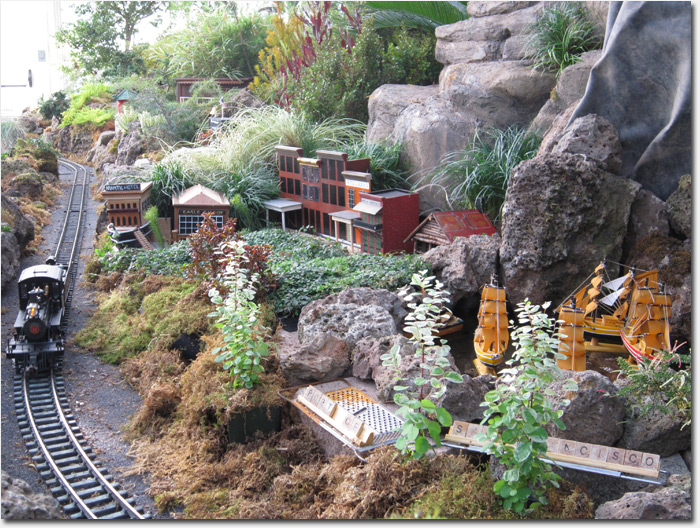
On Thursday morning, we got a sneak peek of the Conservatory of Flower’s new Garden Railway exhibition, Boomtown: Barbary Coast. This year they’ve tackled San Francisco’s historic Barbary Coast, an area of the city that was the “Sin City” of the latter half of the 19th century.
The Barbary Coast encompassed a 40-square-block area bounded by the Embarcadero, Grant Avenue, Broadway, and Commercial Street. It began blossoming in 1849 when adventurers and fortune seekers were drawn to California by the lure of the Gold Rush. San Francisco was a burgeoning port city and a stopover for aspiring miners on their way to find their fortune. A stop on the Barbary Coast was about business during the day – San Francisco was the busiest port on the West Coast at the time. But come nightfall, the area transformed into a dangerous playground, offering gambling parlors, rowdy saloons, whorehouses, and opium dens.
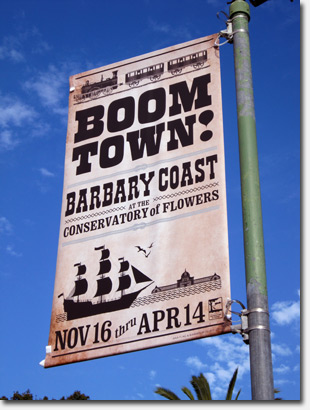 Needless to say, the Barbary Coast has a highly colorful history, and the Conservatory’s new exhibit does a great job of celebrating it. The small-scale railroad cars wind their way by miniature buildings, made from recycled and repurposed materials, that represent the famous landmarks of the Barbary Coast like Portsmouth Square, Union square, Chinatown and Maiden Lane.
Needless to say, the Barbary Coast has a highly colorful history, and the Conservatory’s new exhibit does a great job of celebrating it. The small-scale railroad cars wind their way by miniature buildings, made from recycled and repurposed materials, that represent the famous landmarks of the Barbary Coast like Portsmouth Square, Union square, Chinatown and Maiden Lane.
Water areas of the exhibition play host to small scale clipper ships, representing the maritime traffic that came through the area. Often ships that came into port were abandoned as sailors grabbed mining equipment and flocked to the hills to find their fortune in gold. Those abandoned ships were often re-purposed into hotels, warehouse and saloons, including one ship called the Nitanic which is represented in miniature in the exhibit. Its remains were discovered in 1976 when a construction crew unearthed the hull.
The exhibit is authored by Daniel Bacon, the city’s definitive expert on the Barbary Coast and Founder and Director of the city’s Barbary Coast Trail. Bacon’s interpretive signs in the exhibit are both informative and entertaining, bringing to life the area’s landmarks like Maiden Lane – so named for the bare-chested maidens who hung out of windows to lure in clientele – as well as its shady cast of characters ranging from Ah Toy, the first Chinese prostitute to jazz musician Jelly Roll Morton who performed on the Barbary Coast from 1916-1919.
In addition to the railway there are also some constructed portions of the exhibit including a saloon entrance that houses a souvenir photo booth, and an old-fashioned teller window at a bank. After all, it was the Gold Rush that we have to thank for Wells Fargo and some of our other early banks, whose mission was to protect the money pouring in from gold prospecting.
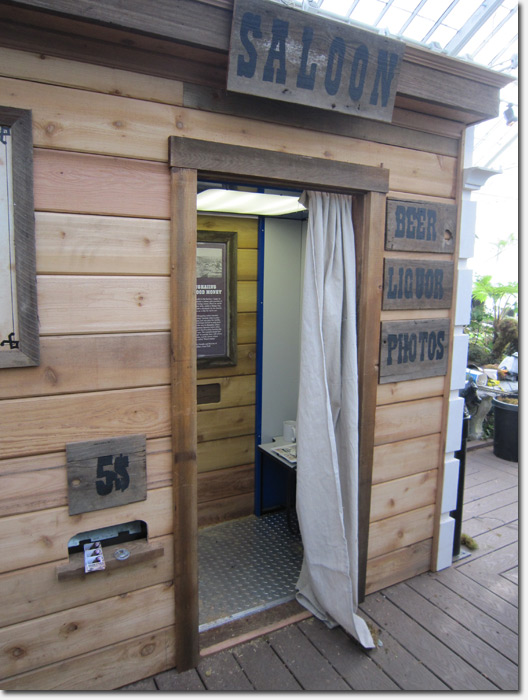
As in past Garden Railway exhibitions, the sounds are as much a part of the experience as the visuals and history. Sound engineer Andrew Roth once again went above and beyond to capture sounds from all over the Bay Area that represent the era. He even tracked down an original melodian organ to record some of the old saloon songs from the Barbary Coast’s heyday.
As you step up to the Maiden Lane portion of the exhibit, you’ll hear ladies’ voices giggling and whispering, and at the bank window, you’ll hear an old man wheezing and coughing as he counts money.
The Boomtown: Barbary Coast exhibition at the Conservatory of Flowers opens today and runs through April 14, 2013. Grab a friend or your family and head over there – there’s plenty to entertain (and inform) kids and adults alike.
Sarah B.
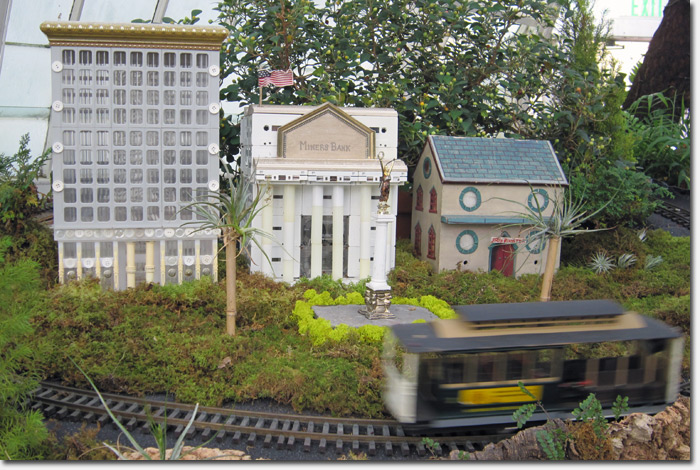
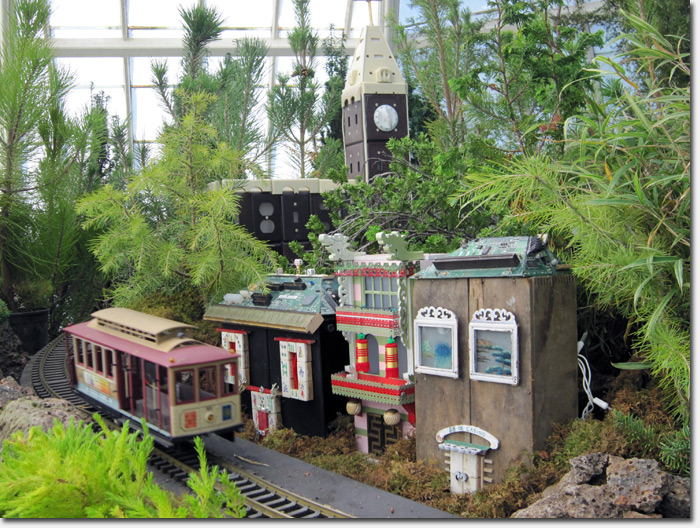
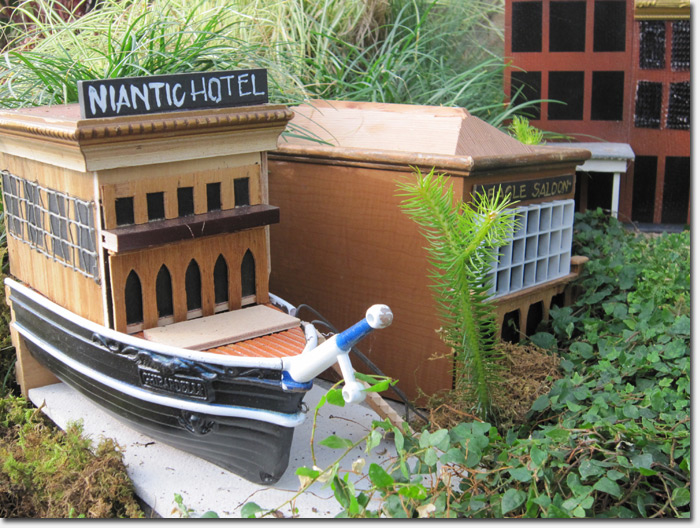
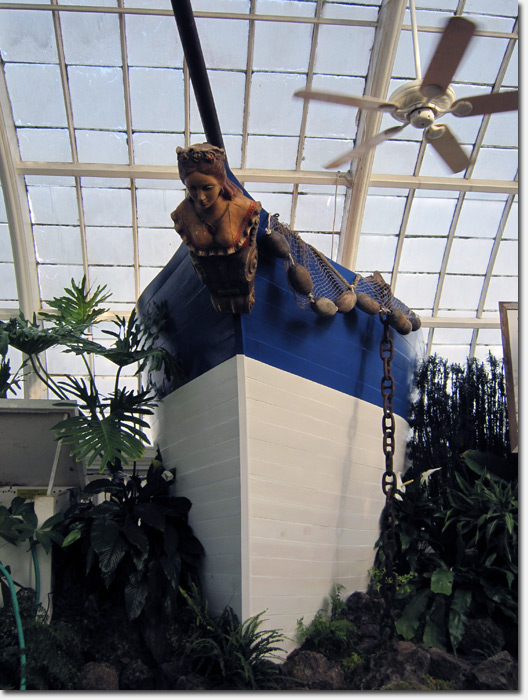
Cool! Wonder if one of the little trains will have a tiny closed circuit camera on it. When they did the ‘Playland at the Beach’ they did just that and transmitted the signal to a TV. Soooo neat to get to see the exhibit from the train’s point of view!